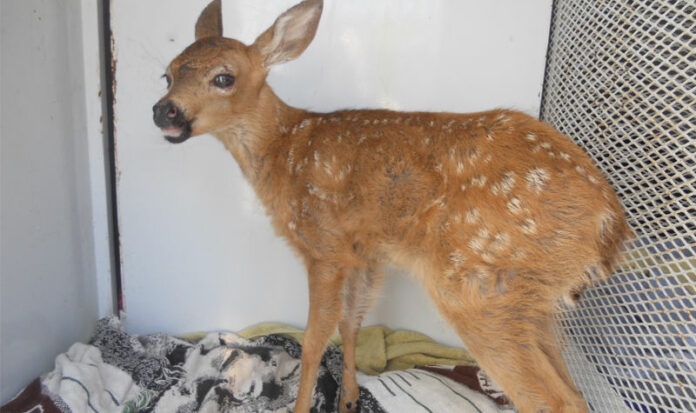As babies start emerging, hands off is the best approach
Spring has sprung and that means babies of all varieties are being born. Here in Sonoma County we are blessed with an abundance of creatures, both domestic and wild. Our most prolific wild animals are deer, and this is the time of year that fawns are hitting the ground in all their spotted adorableness.
Human interactions with fawns are common, but what should you do if you find one? How do you know when to intervene and when to steer clear because Momma Deer has it well in hand?
According to Melanie Parker, natural resource manager for Sonoma County Regional Parks, the deer species found in Sonoma County is the Columbian Black-tailed Deer. While their numbers are vast, there isn’t a real census on their population, though they’re planning a study starting this summer in Shiloh Park to come up with an estimate, she said.
Fawns are born with a very specific set of characteristics meant to help them survive.
“The main thing that people need to realize is that fawns are born scentless and with spots for camouflage for a reason,” Parker said. “This is so the does can leave them all alone to sleep in the tall grass while mom is out foraging.”
The challenge often comes when people come upon these fawns, and finding them alone, assume them abandoned or orphaned.
“Many times people find, or their dogs flush, a fawn and they assume it is an orphan,” Parker said. “It is not. The mothers can be gone for several hours and will reunite with their fawns at that time.”
Fawn Rescue in Kenwood is the local authority on fawns, and is the agency tasked with caring for them. On its website, the organization clearly explains when to leave a fawn alone, and when to intervene. Fawn Rescue goes on around 140 calls a season, and usually ends up rehabbing and releasing around a dozen fawns each year. Fawns are typically released in the fall, though occasionally a fawn with minor injuries who hasn’t been abandoned may be able to be doctored on site and released back to its mother immediately.
“Most of the time the fawn is fine,” Matt Wolfe, animal care coordinator for Fawn Rescue, said. “The mom will leave them, and people have a hard time with that because they are so fragile and tiny. They’ll hover over the fawn and mom won’t come back while they are there because we are a predator to them. If they are standing over the fawn because it’s alone, they are making the problem worse.”
Sonoma County Animal Services refers callers to Fawn Rescue when a fawn is potentially in distress.
“Deer are really hard to handle, they are super reactive,” SCAS officer Shirley Zindler said. “The determining factor is if they are still spotted, then Fawn Rescue gets involved. If they aren’t spotted, they are past an age to be fixable, savable or rehab-able. Because they are so reactive, they will hurt themselves much worse fighting you.”
Zindler said the outcome for seriously injured mature deer can often be grim, usually resulting in euthanasia.
“Once in a while, you’ll have a deer stuck in a wrought iron gate or one that fell in a swimming pool; if it’s a quick fix that like we’ll intervene. But, if you have to medicate or treat it every day they just don’t do well,” she said.
According Fawn Rescue, if a fawn is lying upright, eyes wide open, but flattened to the ground, this is its camouflage position, which allows it to blend in with its surroundings.
“The fawn will bleat for Mom,” Wolfe said. “Over time the fawn will let you know it’s in trouble. If they are dirty, that’s another warning sign we look for. They should be spotless; Mom keeps them clean so they don’t have a scent to predators.”
“Also, it is critical that people keep their dogs on a leash, (when out and about) as even running after a fawn or a pregnant doe can stress them enough to be deadly,” added Parker.
“This year dogs have been a real problem,” Wolfe said. “We’ve had a trend of fawns injured when people let dogs off leash in the parks.”
If you find an injured or distressed spotted fawn in Sonoma County call Fawn Rescue at (707) 931-4550 and be prepared to give exact directions. If there is an inured adult deer, contact Sonoma County Animal Care & Control at (707) 565-7100. For more information on when to call about a fawn you fear might be in distress, check out fawnrescue.org. Wolfe stressed that concerned citizens should always feel free to call Fawn Rescue to discuss their situation.
76.8
F
Healdsburg
April 21, 2025









